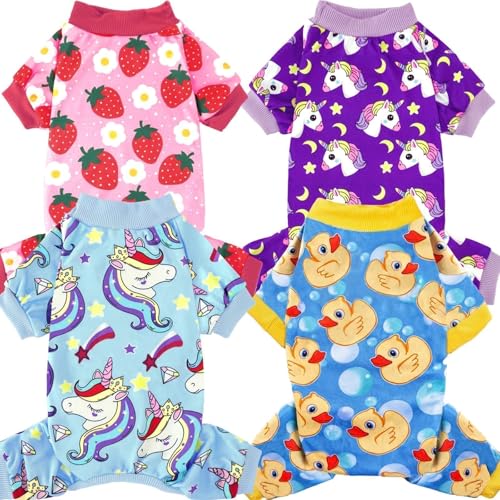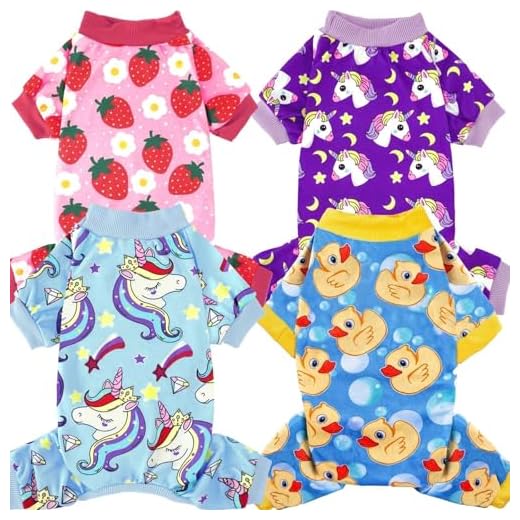


Absolutely, it can be appropriate for your pet to don garments during their rest periods, provided certain guidelines are followed. Selecting items that are the right size and comfort level is crucial. Tight-fitting apparel can restrict movement and cause discomfort, while loose items may pose a choking hazard if they get caught on something.
When I first brought my furry friend home, I was excited to try out various outfits. I soon realised that not every piece was a hit. One chilly evening, I dressed him in a snug little sweater. To my surprise, he curled up happily on the couch, clearly enjoying the warmth. However, I learned to always monitor him to ensure he was comfortable and not overheating.
Natural materials tend to be the best choice, as they allow for breathability. Fabrics like cotton or wool can help regulate temperature, preventing any discomfort. Avoid synthetic materials that might irritate the skin or cause overheating. Always check for tags or labels that indicate the fabric type, and if your pet shows signs of irritation, it’s wise to remove the garment immediately.
In addition to comfort, consider the purpose of the attire. If it’s for warmth during colder months, make sure it covers the belly and chest adequately. However, if it’s merely for style, a lighter fabric might suffice. Remember, a happy canine is one that feels good in their skin–or, in this case, their outfit!
Potential Risks of Dressing Pets for Rest
While adorning your furry companion in garments can be delightful, there are certain risks to consider before letting them doze off in attire. Here are some key points to keep in mind:
Physical Discomfort
- Ill-fitting attire can lead to chafing or irritation on the skin.
- Heavy fabrics may cause overheating, especially in warmer climates.
- Restrictive designs might hinder movement, making it uncomfortable for a pooch to shift positions during rest.
Behavioral Concerns
- Some canines may feel restricted or anxious in clothing, leading to disrupted behaviour.
- Altered sleeping patterns may occur if a pup is not accustomed to wearing garments.
- It’s crucial to observe how your pet reacts to being dressed; signs of distress should prompt a change.
Always monitor your companion while they are attired, especially during naptime. A quick check can prevent potential issues and ensure comfort. Prioritising your pet’s well-being is key when choosing to dress them.
Choosing the Right Materials for Dog Clothing
Opt for breathable fabrics like cotton or bamboo. These materials allow air circulation, preventing overheating during rest. I remember when I bought my first sweater for my pup; it was made of a thick polyester blend. He seemed uncomfortable and restless, prompting me to research better options.
Natural fibres are generally better for sensitive skin. Wool can be warm but may irritate some animals. I had an incident where a wool jumper caused my dog to itch, leading to a trip to the vet. Switching to a soft cotton alternative made a remarkable difference.
Moisture-wicking fabrics are beneficial if your furry friend tends to sweat. These materials draw moisture away from the skin, keeping them dry and comfortable. I discovered this when I got a lightweight jacket for rainy days–my dog didn’t mind wearing it at all, thanks to the breathable lining.
Avoid synthetic blends that trap heat and moisture. I once purchased a colourful costume for a special occasion, unaware of the discomfort it would cause. My dog spent the entire event trying to shake it off, which taught me to always check the fabric content before making a purchase.
Look for hypoallergenic options if your companion has allergies. Some brands offer specialised lines designed to minimise irritation. After a few trials, I found a local shop that sells such items, and my dog has been much happier since.
Lastly, pay attention to the weight of the fabric. Lightweight options are ideal for indoor use, while heavier materials can be suitable for colder weather. I once got a thick coat for winter, but it was too cumbersome for my canine buddy. He preferred his lighter jacket that still provided warmth without restricting movement.
How Clothing Affects a Dog’s Comfort and Sleep Quality
Choosing to dress your furry companion can significantly influence their comfort and restfulness. When I first put a sweater on my pup during a chilly evening, I noticed an immediate change in her behaviour. She seemed to relax more, curling up in her bed with a satisfied sigh. The right garment can provide warmth, but it also has to fit well. Ill-fitting attire can lead to discomfort, causing restlessness.
Materials play a crucial role in this equation. I once bought a cotton outfit that my dog adored. It was breathable and allowed her skin to breathe, which helped her feel at ease. Conversely, I had a bad experience with a polyester blend that led to excessive sweating and fussiness. Opting for natural fabrics like cotton or wool can enhance comfort, especially during rest periods. I recommend always checking the fabric composition and ensuring it’s soft against their skin.
The design of the clothing matters too. Some styles restrict movement or provoke anxiety. I learned this the hard way when I tried a snug-fitting onesie on my dog. She couldn’t settle down and constantly shifted positions. Loose-fitting options can allow for more freedom, enabling your pet to curl up comfortably and find their ideal resting position.
Temperature regulation is another factor. During warmer months, lightweight and breathable fabrics can prevent overheating, while thicker materials can provide warmth in colder weather. I’ve found that layering helps; a thin base layer with a warmer outer piece can adapt to fluctuating temperatures, ensuring comfort throughout the night.
While some might think that adorning their pet is merely for aesthetics, it’s evident that the right choice can contribute to a more restful experience. Monitoring your pet’s reactions to different fabrics and styles will inform better choices in the future, leading to greater comfort during those precious moments of rest.
Signs Your Canine Companion May Not Enjoy Sleeping in Attire
Watch for these behaviours to determine if your furry friend is uncomfortable in garments during rest:
| Behaviour | Possible Interpretation |
|---|---|
| Excessive scratching or biting | Annoyance or irritation caused by the material. |
| Reluctance to settle down | Discomfort associated with wearing items. |
| Vocalisation (whining or barking) | Seeking attention or signalling discomfort. |
| Trying to remove the clothing | Strong dislike for the garment. |
| Changes in body language | Signs of stress or anxiety, such as tensed muscles. |
After noticing these signs, consider alternatives to enhance your pet’s comfort. Keeping an eye on your pet’s well-being can be aided by providing a balanced diet. For high-quality nutrition, check out this best canned dog food with grain. This can ensure they feel good from the inside out, which may help with restfulness.
Alternatives to Clothing for Keeping Dogs Warm at Night
Consider using a high-quality dog blanket to provide warmth without restricting movement. A soft, well-insulated blanket can be a snug haven for your pet, allowing them to burrow in when they feel chilly. I’ve noticed that my furry friend loves to snuggle under a fluffy throw, and it gives him a sense of security too.
Investing in a heated pet bed is another excellent option. These beds maintain a comfortable temperature, perfect for those colder nights. My dog has one, and it’s like his own little oasis–he often chooses it over the couch, especially when temperatures drop.
Utilising a doggy sleeping bag is also practical. They come in various sizes and materials, designed to keep warmth in while allowing flexibility. I remember when I first introduced one to my pup; he took to it immediately, curling up inside and enjoying the warmth it provided.
Another approach is to create a designated sleeping area with extra padding. Layering blankets or using a thick mat can help insulate against cold floors, especially during winter months. My dog appreciates his own warm corner, which he associates with comfort and rest.
Lastly, consider the room temperature. Keeping the space warm and cosy can significantly enhance your pet’s comfort level without the need for apparel. I often adjust the thermostat on chilly nights, ensuring my furry companion stays toasty without any extra layers. It’s a simple change that goes a long way in keeping him comfortable.







